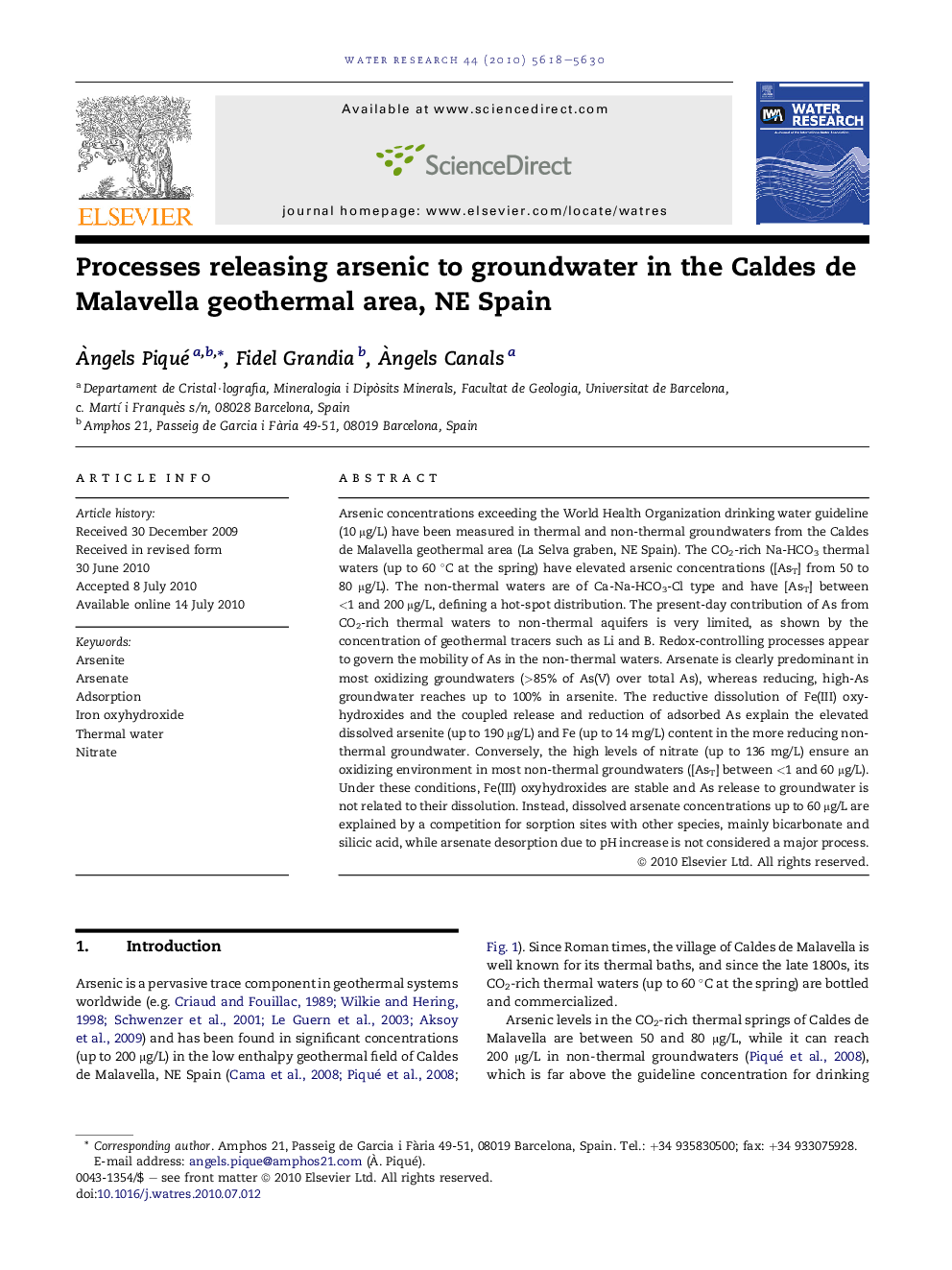| کد مقاله | کد نشریه | سال انتشار | مقاله انگلیسی | نسخه تمام متن |
|---|---|---|---|---|
| 4484553 | 1316925 | 2010 | 13 صفحه PDF | دانلود رایگان |

Arsenic concentrations exceeding the World Health Organization drinking water guideline (10 μg/L) have been measured in thermal and non-thermal groundwaters from the Caldes de Malavella geothermal area (La Selva graben, NE Spain). The CO2-rich Na-HCO3 thermal waters (up to 60 °C at the spring) have elevated arsenic concentrations ([AsT] from 50 to 80 μg/L). The non-thermal waters are of Ca-Na-HCO3-Cl type and have [AsT] between <1 and 200 μg/L, defining a hot-spot distribution. The present-day contribution of As from CO2-rich thermal waters to non-thermal aquifers is very limited, as shown by the concentration of geothermal tracers such as Li and B. Redox-controlling processes appear to govern the mobility of As in the non-thermal waters. Arsenate is clearly predominant in most oxidizing groundwaters (>85% of As(V) over total As), whereas reducing, high-As groundwater reaches up to 100% in arsenite. The reductive dissolution of Fe(III) oxyhydroxides and the coupled release and reduction of adsorbed As explain the elevated dissolved arsenite (up to 190 μg/L) and Fe (up to 14 mg/L) content in the more reducing non-thermal groundwater. Conversely, the high levels of nitrate (up to 136 mg/L) ensure an oxidizing environment in most non-thermal groundwaters ([AsT] between <1 and 60 μg/L). Under these conditions, Fe(III) oxyhydroxides are stable and As release to groundwater is not related to their dissolution. Instead, dissolved arsenate concentrations up to 60 μg/L are explained by a competition for sorption sites with other species, mainly bicarbonate and silicic acid, while arsenate desorption due to pH increase is not considered a major process.
Journal: Water Research - Volume 44, Issue 19, November 2010, Pages 5618–5630